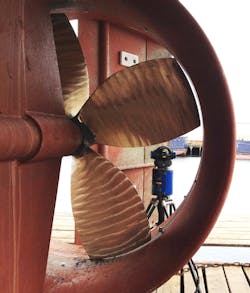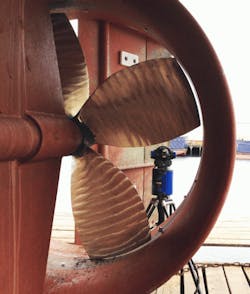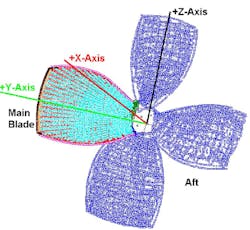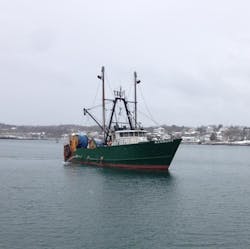Propeller gets immortalized in digital data
A laser tracker helped measure a 25-year-old propeller in just a few hours as a means of generating a CAD model from which copies could be made.
The propeller was on a successful commercial fishing vessel named Harmony. Boat owner Atlantic Trawlers had no drawings of the four-bladed prop but wanted to capture the propeller dimensions so they could be replicated on propellers powering other ships in its fleet.
Topsfield, Mass., did the data capture. The main challenge was measuring the propeller while it was mounted on the ship driveshaft under the hull. The laser tracker, able to scan up to 1,000 points/sec, was small enough to fit in the confined area under the hull.
ECM imported measurements into a CAD package that can construct features and surfaces from point data.
For this particular case, one of the four blades was fitted with complex surface geometry (Nurbs surfaces). The other three blades were created by rotating the initial CAD-rendered blade every 90° to form four identically shaped blades in the model.
As a quality check, actual measurements for the other three blades were compared to the “engineered” surface of the main blade to find disparities and any deformations.
ECM converted the propeller model into STL and IGES CAD files. This data can be used to generate CAD drawings and surface definitions for molding replicas of the Harmony propeller or to generate a five-axis NC machine program for cutting propellers from metal.About the Author
Leland Teschler
Lee Teschler served as Editor-in-Chief of Machine Design until 2014. He holds a B.S. Engineering from the University of Michigan; a B.S. Electrical Engineering from the University of Michigan; and an MBA from Cleveland State University. Prior to joining Penton, Lee worked as a Communications design engineer for the U.S. Government.



